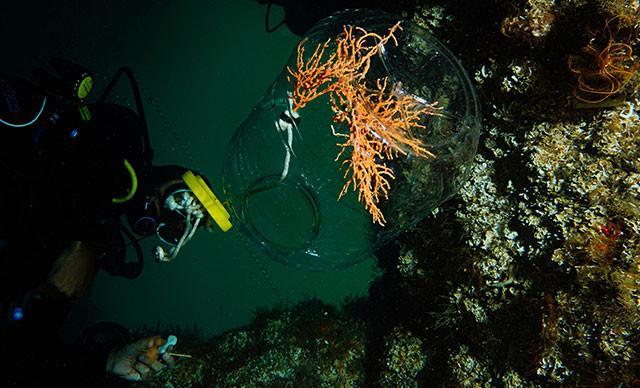
A species of a coral colony that face the possible danger of extinction in a reef off Sivriada, one of the Princes’ Islands in the Marmara Sea, has been transferred via a special method to another region of the Princes’ Islands, known by the names of Tavşan or Balıkçı Island.
The move came after experts said species of Eunicella cavolini, commonly known as the yellow gorgonian or yellow sea whip, would face extinction on the Sivriada reef following the zoning of the island for construction.
Some 280 coral plantations were carried out in the initial stage of the first round last year, while 200 coral planting is under the plan for the second round tour following the scope of a project, which aims to save corals.
Nearly 70 percent of the corals planted managed to survive in the works conducted last year, according to Demirören News Agency. This rate is around 20 percent in the world.
Marmara Sea corals suffered a mass extinction in 2015 due to a red tide coming from the Black Sea towards the Aegean Sea through the Marmara Sea, the inland sea of Turkey.
The incident prompted the ADYSK (Adalar Denizle Yaşam ve Spor Kulübü Derneği) Association to adopt a technique developed in Spain within the scope of a project called “ADAMER,” and to apply it for the transportation of the relevant yellow coral in the Marmara Sea across two islands, some 13 kilometers apart.
“Our aim is to bring the corals in Sivriada to a non-residential area such as Tavşan Island, to increase their lives here and to try to create a coral reef here, said Volkan Narcı, an official from ADYSK.
“When this project started, we realized that thanks to the coral transplantation work we did in Istanbul, we are building a fortification for the protection of the Mediterranean Sea,” Narcı added.
Noting that the temperature of the area where the coral beds are located has a constant temperature of 15 degrees, Narcı also pointed out that many Mediterranean species are moving towards the Marmara Sea for this reason.
“We are trying to create new corals with stronger DNA by combining corals with their separate cousins,” he also noted.
He also called on the public and non-governmental organizations to put support behind their application to create a conservation area around Istanbul’s archipelago.
Receiving financial support from the Scientific and Technical Research Council of Turkey (TÜBİTAK), the project is being carried out with the cooperation of several governmental and non-governmental organizations.
Apart from natural factors, wastes and industrial materials also threaten the diversity in the Marmara Sea.
Fishing nets used in the area of the Princes’ Islands are left tangled in rocks or break apart, leaving their remnants to drift in waters and threatening the lives of scores of marine species, including corals.